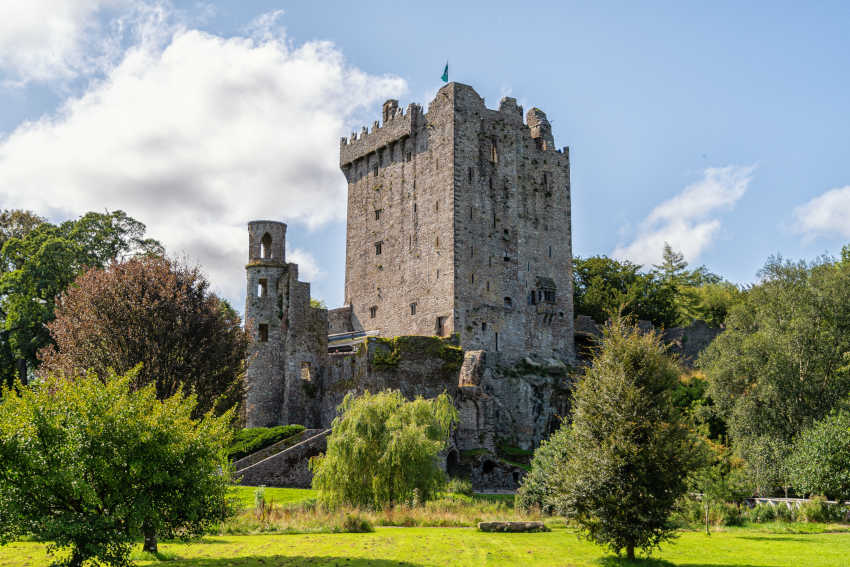Irish people like to talk! The tradition of storytelling is almost as ancient as Ireland itself. The country has one of the richest folklore traditions in the world which has survived through the Celtic culture of more than 2,000 years.
Irish people have always had a love of words and we're known as the 'island of saints and scholars' with a great appreciation for the spoken word. Storytelling is, in fact, the flagship of Irish folklore. The famous oral tradition of Ireland is showcased in famous storytellers from Peig Sayers and her poignant tales of the Blasket Islands to Anna Nic an Luain of Donegal.
A huge proportion of Irish people have 'the gift of the gab'. The power of memory in story telling and the strength of the oral tradition of the country bears this out. The tradition was developed during a time when people lacked in material goods but where things of the spirit, mind and imagination were valued.
From traditional Irish folk tales to the wit and humour of Oscar Wilde, to the gorgeous imagery of WB Yeats, storytelling is everywhere across Ireland dating from ancient times until now.
 |
Blarney Castle in County Cork
|
The gift of 'Blarney'
While it can be seen by some as a bit of stereotype, the fact that Irish people became known for their storytelling probably generated from the famous Blarney Stone in County Cork. The stone is said to have its powers from a witch who wanted to thank the king for saving her from drowning. It's visited by thousands of international tourists every year, where perched high on a castle wall, they're invited to lean back, grab the railings and kiss the stone to get the gift of the gab or 'blarney' which is defined as persuasive eloquence.
Another reason for the evolution of storytelling in Ireland was the inclement and unpredictable weather keeping people in from the cold and wet. Irish pubs were a popular meeting place and it was likely that after limited amounts of contact from other people and houses that people were more likely to be quite lively and talkative when, coupled with a few drinks, they again were reunited with friends and neighbours! Some storytellers even went from door to door and their visits in dimly lit scenes by the fire added to the atmosphere and were eagerly anticipated.
An important link in Celtic and Irish culture is the Seanchaí and this continues to play a dominant role in the Irish oral tradition. The role of the Seanchaí is
particularly associated with the Gaeltacht, the Irish speaking areas of Ireland. They were literally the entertainment for the people of ancient Ireland and held the key to all of Irish folklore, legend and myth. They were traditional Irish storytellers and they were custodians of history. They could recite ancient tales of wisdom and kept everybody enthralled.
Bards were Second only to Kings
In ancient Celtic society, bards held a position of esteem, second only to kings. They could recall vast amounts of poetry which they performed live, and their songs, poems and stories were often the only historical record available. They were even seen by some as historians.
They were replaced by the aforementioned Seanchaithe, who were servants to important leaders and kept track of important information for them: from literature to laws, genealogies and annals. When Gaelic civilization in the 1600s was destroyed as a result of the English conquests, these more formal roles ceased to exist and the term Seanchaí came to be associated instead with traditional storytellers from the lower classes. They didn't have as much prestige but were still present and popular.
The Seanchaithe were many and varied and used all sorts of storytelling conventions. They ranged in styles of different gestures and speeches that were a special part of the Irish folk tradition and they were known as practitioners of their art and well respected. Sadly many of the stories were lost because rather than being written down, they were often passed on from storyteller to storyteller orally.
When the Irish culture was being revived, the Irish Cultural Revival took a big interest in the skills and art of the Seanchaí and they wrote the stories down, recorded them and they then began to be distributed to a global audience. This Gaelic revival featured a resurgence of interest in Irish language, literature, history and folklore inspired by the nationalism that was growing in the 19th century. By that time Gaelic had more or less died out as a spoken language apart from the most isolated areas in rural parts, replaced by English.
The last Seanachaí in Ireland is thought to be Seán Ó hEinirí of Cill Ghallagáin, County Mayo. Eddie Lenihan, a native of Kerry, who resides in County Clare keeps the tradition of the Seanachaí alive and is still hugely popular.
As they say - he could talk for Ireland!